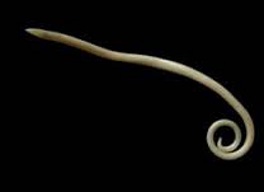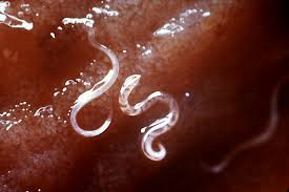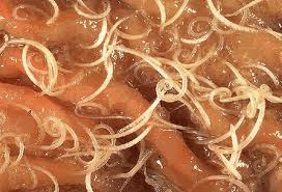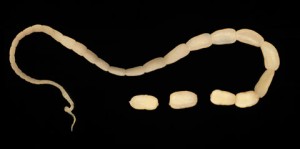
For more information on any of these parasites please search through our Educational Articles under the “Pet Health” tab or clink on “Links” and then “Parasites” for links to outside sources of information.
Roundworms
- Zoonotic (transmissible to people)
- Very common
- 6 -18 cm long
- Many puppies are born with them (acquired from their mothers)
- Infective larvae are ingested from the soil
- Chronic ill thrift, diarrhea and pot belly appearance
Hookworms
- Zoonotic (transmissible to people)
- 5 – 12 mm long
- Infective larvae are ingested from the soil or they burrow in through their skin
- Can cause anemia (low red blood cell counts), weakness, poor growth
Whipworms
- Infective larvae are ingested from the soil
- 3 – 8 cm long
- Typhlitis (inflammation of the caecum), weight loss, diarrhea
- Difficult to diagnose as rarely seen in feces as they are intermittent shedders
- Infective eggs are ingested from the soil
Tapeworms
- Common – especially in outdoor cats
- Can be over 2 feet long
- Get from eating small animals or fleas
- We recommend at least twice yearly treatment for outdoor cats and as needed for dogs
Heartworm
- Fatal if not treated
- Acquired from mosquitoes
- An emerging threat in our area as it moves north
- More common in southern Ontario and the USA
- We recommend preventative medications from May to Oct and testing every 3 years
Fleas
- Very common – especially in the late summer and fall
- Can cause severe itchiness and blood loss
- They can bite people as well
- Eggs can survive in your home for over a year
- We recommend preventative medications from May to at least Oct and all year for some patients
Ticks
- Being seen much more commonly recently
- Capable of spreading Lyme’s disease although it is very low risk in this area but it is a major concern in much of southern Ontario
- Need to be removed carefully so as not to leave their heads embedded
- Most common in spring and especially fall







